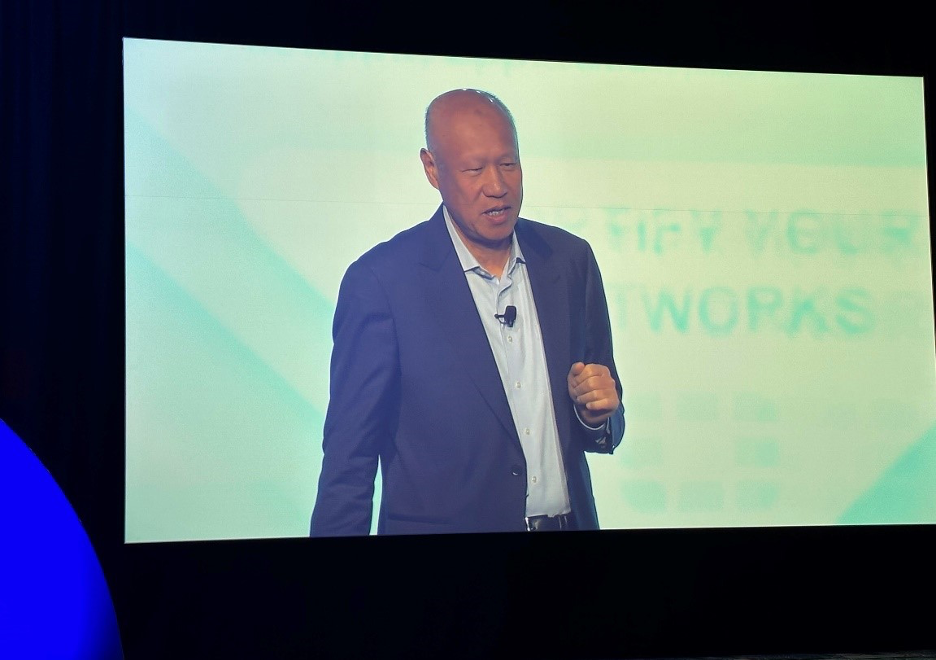
Fortinet’s annual Accelerate event was held in Las Vegas the week of April 1, 2024. Despite its kickoff on April Fool’s Day, there were no big surprises. Instead, Accelerate went far to highlight the company’s continued progress in delivering secure networking solutions with the release of FortiOS 7.6, the Linux-based OS that underlies all of Fortinet’s products. The theme of this year’s event was platform-centricity; in this piece, I will dive deeper into that concept and provide my insights on Fortinet’s platform maturation.
FortiOS 7.6
The single overarching announcement at Accelerate 2024 was the release of FortiOS 7.6. This unified security and network functions fabric is integrated across Fortinet’s entire product portfolio. The operating system has matured significantly over the past two decades, and Fortinet claims that there are hundreds of enhancements in its recent release that aim to mitigate risk and improve user experiences.
To no one’s surprise, given the attention being paid to generative AI across the tech landscape, FortiOS 7.6 extends the company’s foundational GAI functionality, which supports accelerated threat investigation and remediation. New capabilities include the integration of FortiAI (formerly Fortinet Advisior) with the company’s data lake, as well as the integration of FortiAnalyzer and FortiManager into FortiOS 7.6. (More on those below.) These are all logical moves for the company, given that they consolidate tools and will likely provide a higher level of automation given FortiManager’s historical standalone automation capabilities. All of this should translate to management simplicity and faster mean time to detection and remediation for network and security issues. Some of the specific enhancements to FortiOS 7.6 worth highlighting include:
- Robust data loss prevention (DLP) strategy enablement to reduce adoption friction and enhance data protection.
- FortiClient enhancements that improve endpoint detection and response (EDR) with ransomware protection, deeper visibility, and consolidation of VPN, zero trust network access (ZTNA), secure access service edge (SASE), and more in a single agent.
- FortiAnalyzer enhancements that aim to ease security operations through broader data ingestion and to enhance security playbook effectiveness.
- A new Managed FortiGate Service that gives enterprises the flexibility to consume the Fortinet infrastructure as an operational expense. This also provides Fortinet channel partners with an incremental revenue opportunity.
What I find powerful is that FortiOS allows customers to manage firewalls, network segmentation, ZTNA, SASE, and more across both IT and operational technology (OT) environments with a single fabric. In doing so, the company can also enable multiple capabilities and functionality in a single piece of hardware such as a firewall appliance. I liken it to a Swiss army knife, and the flexibility, operational simplicity, and investment protection it creates is compelling. The new FortiOS release should make all of this even smoother and more effective for customers.
Platform-Centricity
The theme for Fortinet Accelerate 2024 was “Step into the Platform Era.” A technology platform is undoubtedly defined by the completeness of its underlying hardware and software components. The challenge is that delivering this kind of platform requires fundamental core competency from the vendor, and it’s often a high bar.
Fortinet clears this bar with room to spare. What impresses me about Fortinet is its investment in both FortiOS and custom silicon. Many security and network infrastructure providers opt to use merchant silicon to reduce cost and time to market, or they use custom silicon for top-of-portfolio-stack offerings. By contrast, Fortinet develops its own security processing units (SPUs) and network processing units (NPUs), which are designed to harden security and offload network functions to improve connectivity performance throughout its entire portfolio. By combining FortiOS and custom silicon, Fortinet is differentiating itself from its rivals and, in the process, providing enterprises with meaningful value in a secure networking platform.
Final Thoughts
From my perspective, Fortinet is optimizing business outcomes through the convergence of networking and security functions. Accelerate 2024 went far to prove that point—a point that is reinforced by the company’s consistent financial performance over its past several earnings announcements.
I would also like to address what is considered Fortinet’s “elephant in the room”: the Chinese heritage of its founding brothers Ken and Michael Xie. Some in the technology industry view their background as a red flag, which has at times led some to express concerns about the security of the company’s solutions. From my perspective, nothing could be further from the truth. Fortinet has proven itself as a viable infrastructure provider for more than two decades, and any assumptions about lax security are unwarranted. Proof lies in the company’s continued momentum across many industries, including its success with U.S. government agencies and U.S.-based partners.






















































































